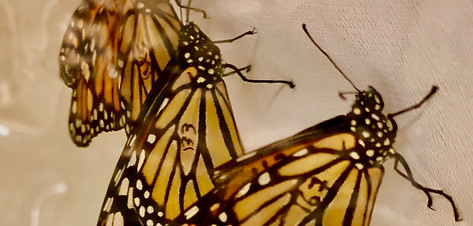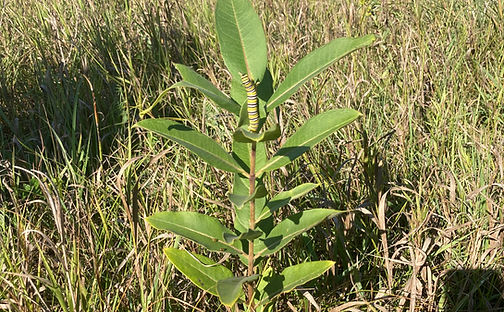Research
Theme 1: Ecology and evolution of plasticity in somatic maintenance and lifespan
Understanding the mechanisms influencing organismal aging lies at the intersection of evolutionary biology, molecular biology, and the health sciences. While evolutionary biology has long focused on the problem of why organisms age, more recent work in model organisms has begun to reveal the molecular and physiological mechanisms that influence how organisms resist or succumb to the somatic damage and dysfunction driving age-related decline. This mechanistic research has shown that somatic maintenance and lifespan can be highly plastic – regulated by molecular pathways responsive to diet, stress, and social cues. Yet, this mechanistic work has largely been conducted in isolation from evolutionary biology, limiting our understanding of how plasticity in somatic maintenance evolves and why it is maintained.
My work bridges proximate and ultimate approaches to understand plasticity’s role in the biology of aging and somatic integrity. Specifically, I am motivated by the following questions:
(1) What genetic and physiological mechanisms underlie plasticity in somatic maintenance and lifespan?
(2) What ecological contexts influence the evolution of somatic maintenance and its plasticity?
(3) What trade-offs maintain variation in lifespan and its plasticity?
(4) As lifespan and its plasticity evolve, what changes occur at the molecular level?
My work not only broadens our basic understanding of why plasticity in somatic maintenance and lifespan varies but will also provide new insights into interventions for age-related disease. These insights are particularly timely amid rapid lifestyle shifts faced by many contemporary populations.
My empirical work addresses these questions using both invertebrate (butterflies) and vertebrate (anuran) systems.
Representative publications:
Shephard et al. (2023). Metabolic stress as a driver of life-history plasticity: flight promotes longevity and antioxidant production in monarch butterflies. Proceedings of the Royal Society B.
Theme 2: Effects of early life or parental stress exposures on phenotypic development
Stressful experiences in early life can have lasting effects on phenotypic development, with consequences for both individual health and evolutionary or demographic processes. Effects of stress can also persist across generations, with parental stress exposures influencing offspring development. However, it is often unclear whether such responses to stress reflect unavoidable damage or costs, or whether they represent adaptive forms of plasticity that may help organisms cope with challenging environments.
I address these issues empirically using both insects (e.g., crickets and butterflies) and amphibians to study how early life stressors, such as dietary restriction and anthropogenic pollution, affect phenotypic outcomes at later life stages. Additionally, I am using a fish system (three-spined stickleback) to study how parental exposures to predation stress influence offspring phenotypic development.
Representative publications:
Shephard et al. (2018) Hormetic effects of early juvenile radiation exposure on adult reproduction and offspring performance in the cricket (Acheta domesticus). Dose-Response.
Theme 3: Mechanisms of plastic rescue in novel or stressful environments
Plasticity provides a means by which populations can rapidly respond to novel environments over developmental time. Yet, we lack understanding of the mechanisms of plasticity that may allow populations to gain an initial foothold in novel or stressful environments, as well as why such mechanisms vary among individuals or populations. Using butterflies, I am integrating evolutionary and ecotoxicological approaches to test a role for generalized stress response pathways in facilitating tolerance to anthropogenic stressors, such as heavy metal pollution and changes in nutrient availability. Additionally, I use amphibian larvae to test the role of physiological stress responses in evolutionary transitions to novel diet types.
Representative publications:
Shephard et al. (2023) Anthropogenic sodium influences butterfly responses to nitrogen-enriched resources: implications for the nitrogen limitation hypothesis. Oecologia.
Shephard et al. (2022) Anthropogenic zinc exposure increases mortality and antioxidant gene expression in monarch butterflies with low access to dietary macronutrients. Environmental Toxicology and Chemistry.
Shephard et al. (2021) Evaluating costs of heavy metal tolerance in a widely distributed, invasive butterfly. Evolutionary Applications.



Mexican spadefoot toad (Spea multiplicata) and ephemeral desert pond near Portal, Arizona (July 2023)

Ephemeral pond in Greene County, Indiana during breeding season of the Eastern spadefoot toad (Scaphiopus holbrookii) in April 2025

S. multiplicata tadpoles (July 2023)
Monarch butterflies (Danaus plexippus) in the laboratory (September 2021)
Monarch caterpillar (D. plexippus) on milkweed plant at Cedar Creek Ecosystem Science Reserve (Bethel, Minnesota) in late August 2021